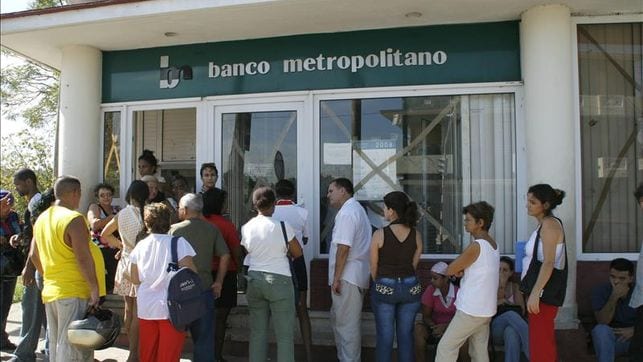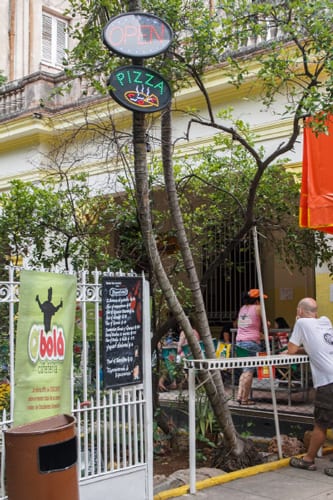Private Entrepreneurship & Cuba’s Credit Policy
Obstacles, solutions & ideas

HAVANA TIMES — In 2011 Cuba’s government reformed its banking system and credit policies to accompany the changes within the economic model and spur growth within the entrepreneurship sector. This was the first significant attempt by the Cuban government to introduce capital loans to support the development of private self-employment.
The banking reforms meant that three state banks (BANDES, BPA, and Banco Metropolitano) could issue microloans to fund the starting capital of microenterprises in Cuba. Loan offerings varied from CUP1000-5000 (US$40-200) and the interest rates were very low, ranging up to 4.25% for short term loans.
Despite the reforms, very few short-term loans have been awarded to private enterprises despite attractive interest rates. However, before analyzing the shortcomings, a deeper look at the reasons why the new credit policies were introduced in the first place is necessary.
By 2011, the Cuban government had indirectly accepted the fact that much of its workforce and population depends on side jobs within the thriving black market in order to supplement their miniscule monthly salaries (US$20-25 per month) and be able to afford the most basic things, such as food (one liter of milk costs US$2.20) or supplies to renovate their homes (basic air-conditioning units cost US$400 and up).
From 2012 onwards, the Cuban government had announced that it would reduce its workforce significantly, aiming to cut about 1.5 million government jobs within four years. The eliminated jobs are supposed to be recovered by the newly legalized private sector, which consisted of about 200 self-employment professions that would be allowed mostly within the service industry.
These policies were meant to reduce unnecessary government expenditure. Additionally, it was expected that the policies would convert a significant part of the black market into a new legal system of self-employment, thus enabling its control and taxation.
To incentivize the legalization of private businesses, the government introduced the new credit policies. However, their impact has been insignificant and some of the reasons for that are within the basic elements of the policies. This has been analyzed in depth by some of Cuba’s leading economists, such as Jessica León Mundul and David J. Pajón Espina.
For example, the loans for private businesses were limited to those who have been formally registered as a self-employed entrepreneur (‘cuentapropista‘) for at least six months prior to applying for the loan.

The loan application process requires the submission of a multitude of documents that most ‘informally’ self-employed Cuban entrepreneurs never dealt with, such as proof of previous tax payments, financial statements (revenues & expenditures) of the past 6 months, financial projections for the duration of the loan, and even an authorization from the public health ministry that the person is physically capable of performing the job.
Adding to the stifling bureaucracy was the issue of collateral that the loan applicant would have to provide as a guarantee for the loan. The valuation process of goods that would be offered as collateral was done by an agency that is separate from the banks and the valuation criteria are confusingly abstract.
Accepting private homes as loan collateral in Cuba is illegal, but applicants would be able to present other options, such as jewelry, domestic valuables (furniture, appliances, etc.), or a car (however, only post-1974 cars would be accepted). This was problematic because the valuation agency would rate objects as being much less valuable then they actually would be if sold on the black market. Furthermore, the value of the collateral, as well as the loans given, would be assessed in the national CUP currency, as opposed to the US dollar-pegged CUC, which is the currency of choice on the black market.
The lack of institutional transparency and the unrealistic valuation of collateral, along with the fact that many applicants simply cannot offer many valuables as collateral, provided plenty of deterrents to potential applicants. If collateral was not available, loan applicants could bring in co-signers who could provide third-party assets as guarantees.
As a consequence, Cuban economists have concluded that the loan approval process is skewed to significantly favor those who have strong personal connections in leadership positions that can provide the necessary guarantees and help them cut through the red tape much more quickly than the ordinary citizen. According to Mundul and Espina, only 550 loans were given to the 444,109 self-employed entrepreneurs in 2013 — a reach of just over 0.1%.
As an alternative to the state’s banking services for working capital, people increasingly rely on remittances to get the necessary capital for a business operation. Entrepreneurs who start business operations funded by generous remittances are in a much better position to receive the low-interest loans, giving them a significant advantage over others as the loan criteria favor those who already have money and a legitimate business.
Annual remittances to Cuba have exceeded US$5 billion, becoming one of the main drivers of the Cuban economy and a major source of foreign income.
Unfortunately, the consequence of increased remittances has been a corresponding rise in income inequality for a simple reason: while certain people have successful and high-earning family members abroad, most others do not and thus are not able to receive the funds necessary to become self-employed.

The Cuban government must provide a viable credit policy for its low-earning population if it wishes to successfully bridge the economic transition period to relieve the state apparatus and create more self-employment within the country.
Considering the current banking system, along with the rising economic inequality spawned by sparse access to cash, it is only a matter of time before a black market for predatory lending (and organized crime along with it) emerges to meet the local demand for capital in a country where a basic livelihood is unaffordable to its own population. Cuba’s GINI coefficient (income inequality measurement) has risen significantly in recent years and currently mirrors most other Latin American nations.
To improve its credit policy and actually encourage the legalization of informal economic activity across the country, the Cuban government must initially take on more of the loan risk in order to facilitate a higher number of loan applicants/approvals and generate the growth of self-employment, while keeping interest rates low.
Mundul and Espina suggest that loan application criteria must create a more welcoming, inclusive environment that is not preventive in terms of excessive bureaucracy or taxation (perhaps offer a short tax-free grace period for newly registered business) and not limit new entrepreneurs who are willing to switch from an informal to a formal form of registered enterprise.
Furthermore, there cannot be just a one-credit-policy-for-all approach; the government needs to support and encourage enterprises that can create additional jobs, reduce dependence on imports, improve manufacturing capacity, and other activities that would strengthen and diversify the local economy.
The failure of the credit policy can be attributed to a lack of experience, which led to the government’s overly complicated and cautious approach to lending practices. Cuba can learn from positive examples in other Latin American countries such as Bolivia or Peru where microfinance models have effectively improved local income generation through self-employment, aided by government policies focusing on reducing income inequality.
At the same time, there is just as much to be learned from the many negative microfinance initiatives. The Cuban government can avoid certain microfinance pitfalls since private commercial banks would not be involved within Cuba for the foreseeable future.
However, there are internationally renowned non-profit microfinance organizations, such as Root Capital, Accion International, and Kiva whose activities often focus on developing the agricultural sectors within emerging economies. The Cuban government would greatly benefit through cooperation with such globally-experienced actors.

A fundamental problem in Cuba is that the Castros have no incentives to lend money. If given the choice to use hard currency for lending reserves or to spend on food or building supplies, they will always choose the latter.
A very interesting essay! One part jumps out at me, “Accepting private homes as loan collateral in Cuba is illegal…”
That right there is one reason why the economy of Cuba continues to decline, the housing stock degrades and buildings crumble every week. So long as mortgages are illegal in Cuba, the wealth that is in real estate will remain locked into the bricks and land. The owners of this property cannot leverage it to borrow the money they need to expand or repair their homes. As a result, the buildings crumble and the value decays. This is how Cuban socialism has destroyed the wealth of the nation.